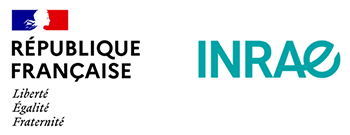Skip to content
- Irstea (“River Hydraulics” team from RiverLy research unit and “STRIM” – tranSporT solide, géomoRphologie, envIronneMent – from ETNA research units) is one of the French leading institutes in sediment transport measurements and modelling. Devices for measuring flow (ADCP, LSPIV, portable LISST, etc.), bed load (samplers), and suspended load (iso-kinetic samplers, automatic samplers, turbidity-meters) are available at Irstea. Irstea already invested in a laser grain sizer LISST 200X, which allows direct measurements of the GSD and concentration in the river, but for limited concentrations. For this reason, the team is currently developing a new sampler suitable for alpine rivers. Irstea has a strong experience in both field and laboratory measurements. Irstea has been monitoring sediment transport in the Arc River and Draix-Bléone catchment for more than 10 and 35 years respectively. Several flumes of different sizes are also available at Irstea to develop laboratory experiments on both hydraulics (FLOWRES ANR project coordinate by S. Proust, 2015-2018) and sediment transport (PhDs E. Perret 2014-2017; C. Carbonaril,2015-2018). Moreover, the “River Hydraulics” team develops 1D numerical modelling to evaluate sediment transport and budgets (RubarBE and AdisTS codes). Both softwares have been validated for coarse sediments (Camenen et al., 2017) and fine sediments (Guertault et al., 2016), respectively. Irstea will be involved in WP1 (tasks 1.2 and 1.4), WP2 (tasks 2.1 and 2.2), and WP3 (tasks 3.1, 3.2 and 3.3). This major involvement of the “River Hydraulic” team of Irstea in most of the tasks of the project including the three complementary approaches proposed (i.e. laboratory, field and numerical analyses) makes it a natural and valuable partner to coordinate the project.
- IGE (Institut des Geosciences de l’Environnement) “Hydrimz” team has a strong expertise in erosion and sediment transfer in headwater to meso scale catchments. Given the lack of measurement devices able to characterize solid fluxes in environments characterized by high sediment loads, the group has devoted significant effort to develop methodologies and instruments able to fill this gap. Among the most promising developments, one can cite the measurement of bedload transport with hydrophones (Geay et al., 2017), the automated on-site measurement of the settling velocities of suspended particles (Wendling et al., 2015, SCAF ANR project coordinated by N. Gratiot, 2012-2015), the RIPLE platform for measuring multiple hydro-sedimentary parameters in rivers, or low cost fingerprinting methods for suspended sediments (PhD M. Uber, in progress). IGE Hydrimz also has an expertise in the dynamics of vegetated gravel bars in the Isère River (Jourdain et al., 2017) and has been involved in the Draix-Bléone observatory for more than 10 years. IGE will be mainly involved in WP1 (task 1.1) and WP2 (tasks 2.1 and 2.2).
- EDF (Electricité de France), leading European hydro-electricity group, will participate to the project through tree entities: EDF-LNHE R&D laboratory is the leading developer of Telemac-Mascaret, an open-source system. LNHE is involved in several works on the Arc-Isère site; and it also performs laboratory studies including small scale models, and state-of-the-art field campaigns. EDF is one (if not the only one) of the few global energy companies to have such a large research department (2000 researchers and 0.5G€ of annual budget); the second EDF business unit participating in the DEAR project is EDF-DTG that will be in charge of flow and sediment monitoring. The third one is EDF-CIH, an engineering department that will be in charge of fields measurement, GIS work and integration of research work to operational work. Due to operational issues, EDF has already led scientific studies on the Isère and Arc River. A substantial budget is already devoted by EDF to in situ monitoring and numerical calculations. EDF will take advantage of the opportunity of the DEAR project to better understand the processes involved in the fine sediment dynamics. Four EDF research engineers are part of the St-Venant Hydraulic Laboratory. This joint research laboratory between Cerema, EDF R&D and Ecole des Ponts Paristech will promote the research lead at EDF. EDF will be involved in WP1 (tasks 1.1, 1.2, 1.3, and 1.4), WP2 (tasks 2.2, and 2.3), and WP3 (3.1).

